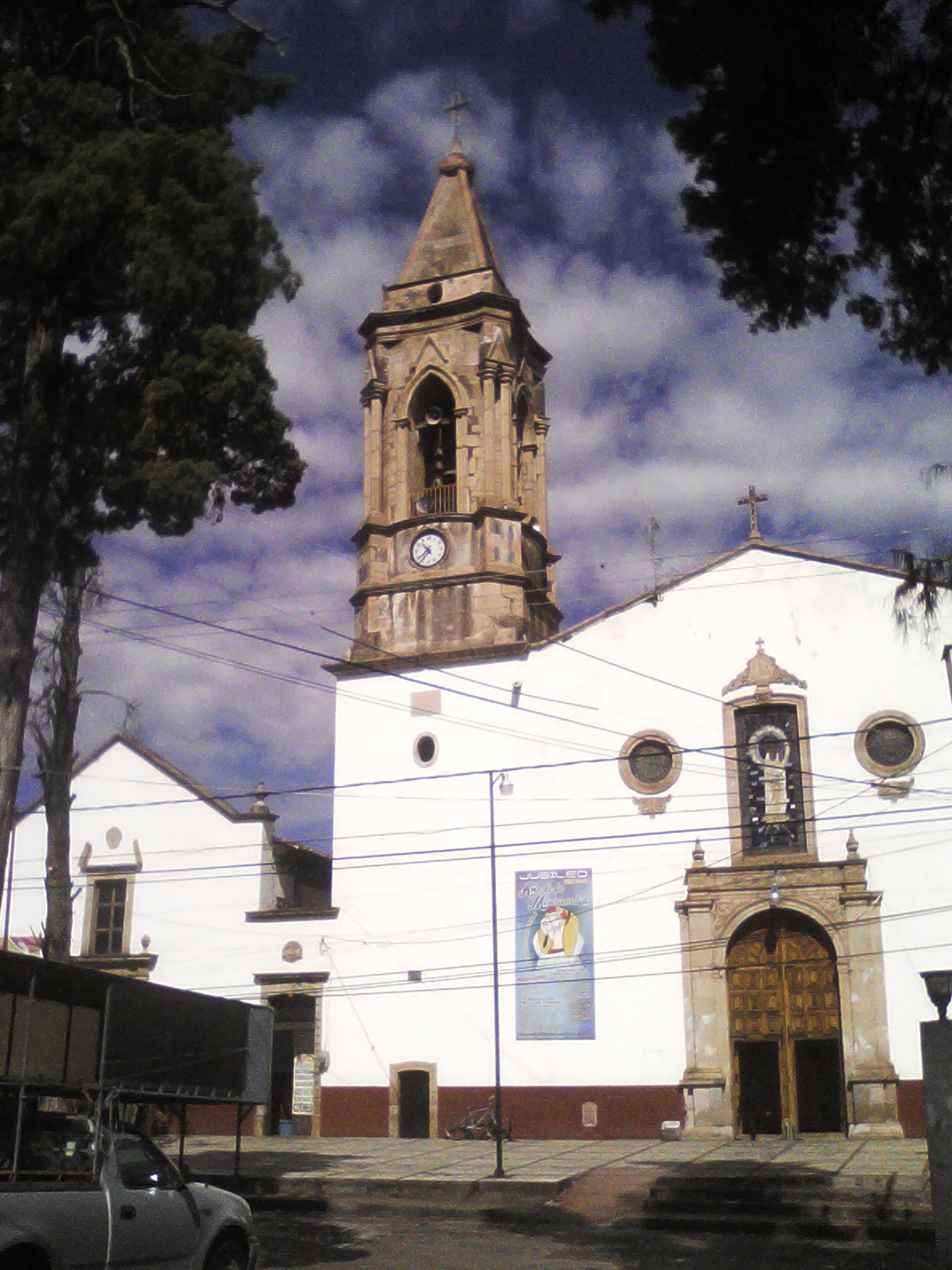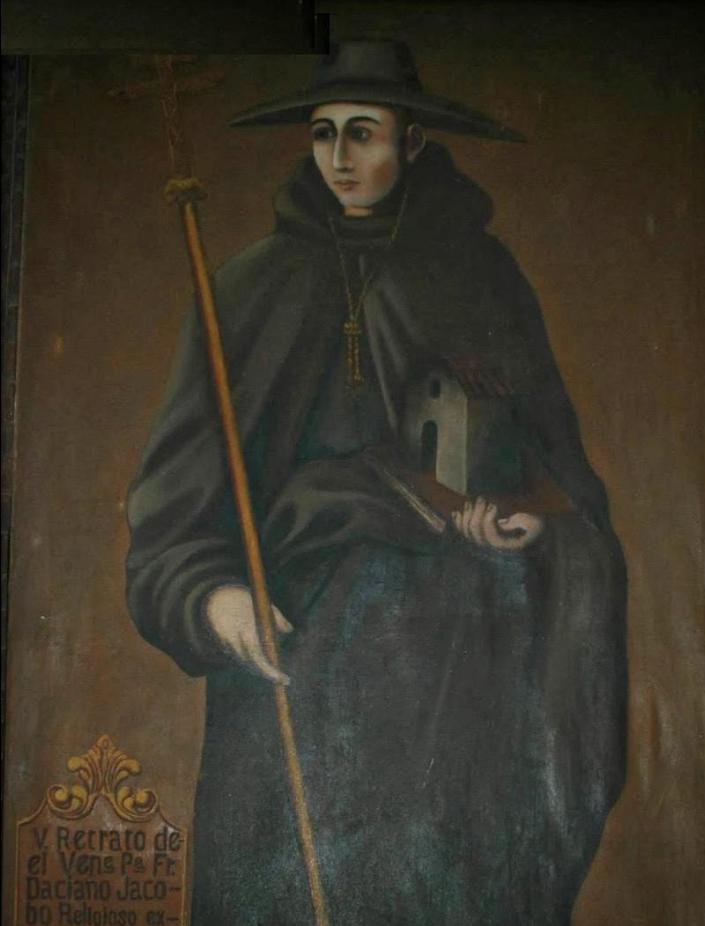|
Coeneo
Coeneo de la Libertad is a town and municipal seat of the Coeneo municipality, located in the north central area of the Mexican state of Michoac√°n. The name Coeneo means "place of birds". History In the year 1530 Friar Mart√≠n de la Coru√Īa was the first to come into contact with the natives of the lands that now make up the present-day Coeneo. He quickly gained trust, affection, and respect, and convinced the natives to convert to the Catholic faith. However, the Spanish conquistador Nu√Īo de Guzm√°n attempted to rob the natives of their possessions and abuse them for refusing to comply. This caused a period where the natives went back into the mountains and to destroy the progress that Mart√≠n de la Coru√Īa had made. It was until the Friar Jacob Dacian succeeded de la Coru√Īa that dialogue began again. An arrangement was made in 1542 for a few families to reallocate to the location now known as Coeneo due to a scarcity of water around the region. Once the new communit ... [...More Info...] [...Related Items...] OR: [Wikipedia] [Google] [Baidu] |
Michoac√°n
Michoac√°n, formally Michoac√°n de Ocampo, officially the Free and Sovereign State of Michoac√°n de Ocampo, is one of the 31 states which, together with Mexico City, compose the Political divisions of Mexico, Federal Entities of Mexico. The state is divided into 113 Municipalities of Michoac√°n, municipalities and its capital city is Morelia (formerly called Valladolid). The city was named after Jos√© Mar√≠a Morelos, a native of the city and one of the main heroes of the Mexican War of Independence. Michoac√°n is located in western Mexico, and has a stretch of coastline on the Pacific Ocean to the southwest. It is bordered by the states of Colima and Jalisco to the west and northwest, Guanajuato to the north, Quer√©taro to the northeast, State of Mexico, the State of M√©xico to the east, and Guerrero to the southeast. The name Michoac√°n is from Nahuatl: ''MichhuahcńĀn'' from ''michhuah'' and ''-cńĀn'' and means "place of the fishermen", referring to those who fish on Lake ... [...More Info...] [...Related Items...] OR: [Wikipedia] [Google] [Baidu] |
Municipalities Of Mexico
Municipalities () are the administrative divisions under the List of states of Mexico, states of Mexico according to the Constitution of Mexico, constitution. Municipalities are considered as the second-level administrative divisions by the Federal government of Mexico, federal government. However, some state regulations have designed intrastate regions to administer their own municipalities. Municipalities are further divided into Localities of Mexico, localities in the structural hierarchy of administrative divisions of Mexico. As of December 2024, there are 2,462 municipalities in Mexico. In Mexico, municipalities should not be confused with cities (). Cities are Localities of Mexico, locality-level divisions that are administered by the municipality. Although some List of cities in Mexico, larger cities are consolidated with its own municipality and form a single level of governance. In addition, the 16 Boroughs of Mexico City, boroughs of Mexico City are considered municipali ... [...More Info...] [...Related Items...] OR: [Wikipedia] [Google] [Baidu] |
Municipal President
A ''presidente municipal'' ( English: "municipal president") is the chief of government of municipios in Mexico. This title was also used in the Philippines during the Spanish and American colonial periods; it is comparable to a mayor of the town or city. The position is comparable to the county executive of a county in the United States or to the mayor of a city in the United States, although the jurisdiction of a ''presidente municipal'' includes not only a city but the municipality surrounding it. Nationally, this position is also equivalent to that of Head of Government of the Federal District and that is why these positions are sometimes referred to as "mayors" in English-language publications. Lists * Municipal president of Cananea * Municipal president of Chihuahua * Municipal president of Ciudad Juárez * Municipal president of Mérida, Yucatán * Municipal president of Monterrey * Municipal president of Sabinas Hidalgo * Municipal president of Puebla See also * Alca ... [...More Info...] [...Related Items...] OR: [Wikipedia] [Google] [Baidu] |
North American Central Time Zone
The North American Central Time Zone (CT) is a time zone in parts of Canada, the United States, Mexico, Central America, and a few Caribbean Islands, Caribbean islands. In parts of that zone (20 states in the US, three provinces or territories in Canada, and several border municipalities in Mexico), the Central Time Zone is affected by two time designations yearly: Central Standard Time (CST) is observed from the first Sunday in November to the second Sunday in March. It is UTC‚ąí06:00, six hours behind Coordinated Universal Time (UTC) and designated internationally as UTC‚ąí6. From the second Sunday in March to the first Sunday in November the same areas observe daylight saving time (DST), creating the designation of Central Daylight Time (CDT), which is UTC‚ąí05:00, five hours behind UTC and known internationally as UTC‚ąí5. Regions using Central Time Canada The province of Manitoba is the only Provinces and territories of Canada, province or territory in Canada that obser ... [...More Info...] [...Related Items...] OR: [Wikipedia] [Google] [Baidu] |
Mexican State
A Mexican State (), officially the Free and Sovereign State (), is a constituent federative entity of Mexico according to the Constitution of Mexico. Currently there are 31 states, each with its own constitution, government, state governor, and state congress. In the hierarchy of Mexican administrative divisions, states are further divided into municipalities. Currently there are 2,462 municipalities in Mexico. Although not formally a state, political reforms have enabled Mexico City (), the capital city of the United Mexican States to have a federative entity status equivalent to that of the states since January 29, 2016. Current Mexican governmental publications usually lists 32 federative entities (31 states and Mexico City), and 2,478 municipalities (including the 16 boroughs of Mexico City). Third or lower level divisions are sometimes listed by some governmental publications. List of federative entities Mexico City, though not formally a state, is included for com ... [...More Info...] [...Related Items...] OR: [Wikipedia] [Google] [Baidu] |
Nu√Īo De Guzm√°n
Nu√Īo Beltr√°n de Guzm√°n (1558) was a Spanish conquistador and colonial administrator in New Spain. He was the governor of the province of P√°nuco (province), P√°nuco from 1525 to 1533 and of Nueva Galicia from 1529 to 1534, and president of the first Royal Audiencia of Mexico ‚Äď the high court that governed New Spain ‚Äď from 1528 to 1530. He founded several cities in Northwestern Mexico, including Guadalajara. Originally a bodyguard of Charles V, Holy Roman Emperor, Charles I of Spain, he was sent to Mexico to counterbalance the influence of the leader of the Spanish conquest of the Aztec Empire, Hern√°n Cort√©s, since the King worried he was becoming too powerful. As Governor of P√°nuco, Guzm√°n cracked down hard on the supporters of Cort√©s, stripping him and his supporters of property and rights. He conducted numerous expeditions of conquest into the northwestern areas of Mexico, enslaving thousands of Indians and shipping them to the Spanish West Indies, Caribbean colonies ... [...More Info...] [...Related Items...] OR: [Wikipedia] [Google] [Baidu] |
Jacob Dacian
Jacob the Dacian (Spanish: Jacobo Daciano; Latin: Jacobus de Dacia; c. 1484 ‚Äď 1566) was a Danish-born Franciscan friar. He achieved fluency in eight languages and fame among the indigenous people of Michoac√°n as a righteous and helpful man toward his flock. His relics, now lost, were kept for a long time by the indigenous people of Tar√©cuato (in Tangamandapio) who still celebrate his birthday every year. Jacob has been identified as a son of King John of Denmark. Name The translation of his name into Medieval Latin as ''Iacobus de Dacia'' stems from the fact that, during the Middle Ages in Scandinavian affairs, the Latin toponym ''Dacia'' stood for Denmark-Sweden. Brother Jacob also went by the name ''Iacobus Gottorpius'', referring to the royal estate of Gottorp (now located in Germany), and also signed as Jacobus Danus "Jacob the Dane". Royal descent Danish historian J√łrgen Nybo Rasmussen (Rasmussen 1974, 1986) has asserted that Jacob was a son (possibly extrama ... [...More Info...] [...Related Items...] OR: [Wikipedia] [Google] [Baidu] |
Census
A census (from Latin ''censere'', 'to assess') is the procedure of systematically acquiring, recording, and calculating population information about the members of a given Statistical population, population, usually displayed in the form of statistics. This term is used mostly in connection with Population and housing censuses by country, national population and housing censuses; other common censuses include Census of agriculture, censuses of agriculture, traditional culture, business, supplies, and traffic censuses. The United Nations (UN) defines the essential features of population and housing censuses as "individual enumeration, universality within a defined territory, simultaneity and defined periodicity", and recommends that population censuses be taken at least every ten years. UN recommendations also cover census topics to be collected, official definitions, classifications, and other useful information to coordinate international practices. The United Nations, UN's Food ... [...More Info...] [...Related Items...] OR: [Wikipedia] [Google] [Baidu] |
Lentils
The lentil (''Vicia lens'' or ''Lens culinaris'') is an annual plant, annual legume grown for its Lens (geometry), lens-shaped edible seeds or ''pulses'', also called ''lentils''. It is about tall, and the seeds grow in Legume, pods, usually with two seeds in each. Lentil seeds are used around the world for culinary purposes. In cuisines of the Indian subcontinent, where lentils are a staple food, staple, split lentils (often with their hulls removed) known as ''dal'' are often cooked into a thick curry that is usually eaten with rice or roti. Lentils are commonly used in stews and soups. Botanical description Name Many different names in different parts of the world are used for the crop lentil. The first use of the word ''lens'' to designate a specific genus was in the 17th century by the botanist Joseph Pitton de Tournefort, Tournefort. The word "lens" for the lentil is of classical Roman or Latin origin, possibly from a prominent Roman family named Lentulus, just as ... [...More Info...] [...Related Items...] OR: [Wikipedia] [Google] [Baidu] |





